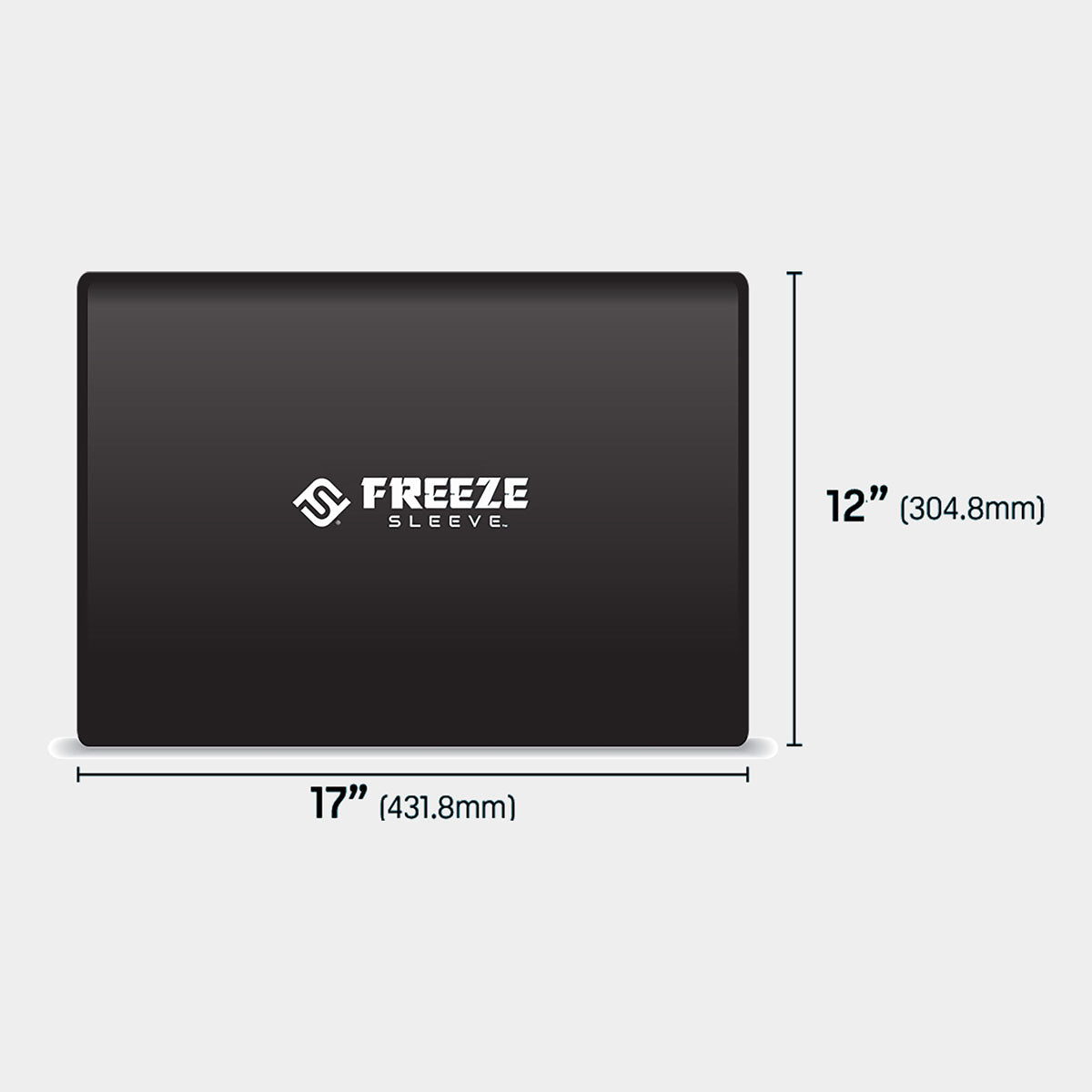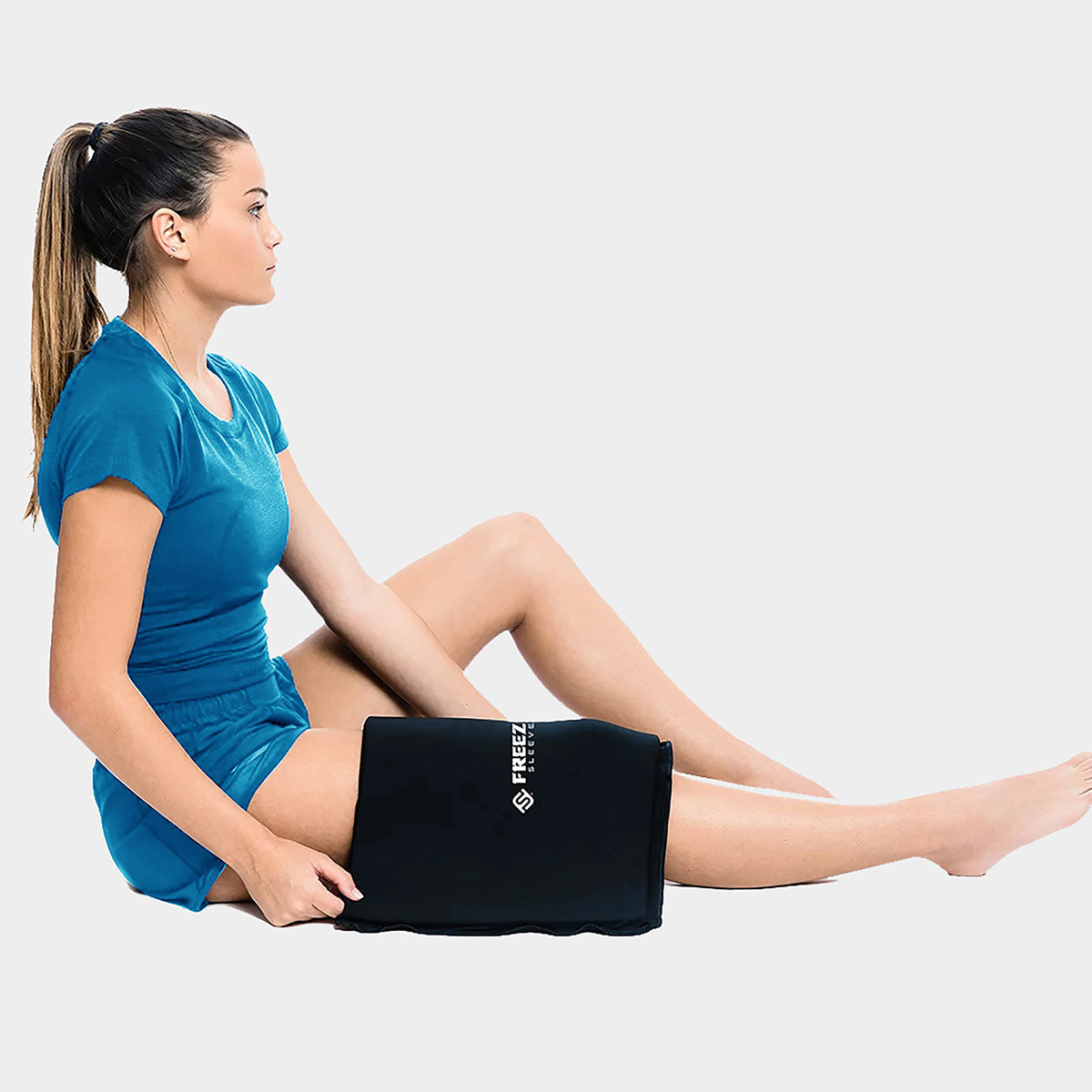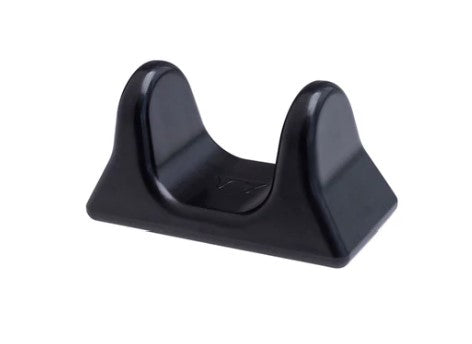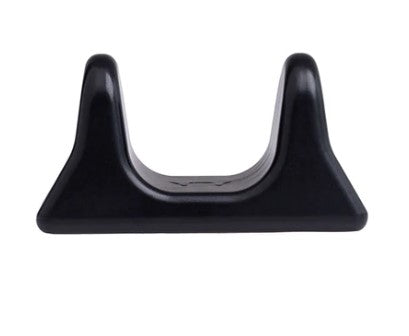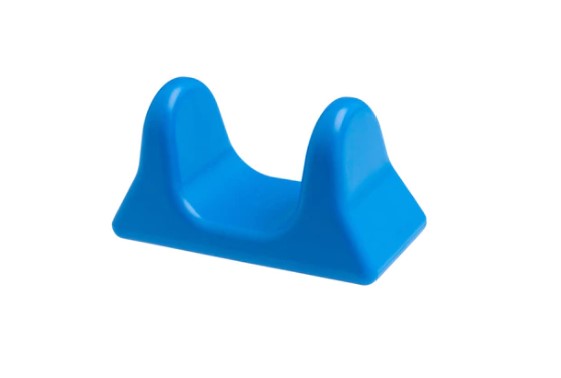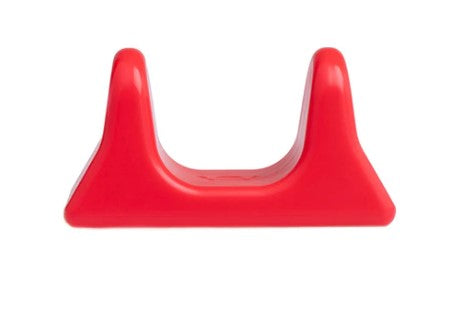
Maybe it’s because I’m a physical therapist and generally deal with people who are in pain, but I look at
Dave Tate and the injuries he has sustained, trained through, and came back from, and it creates a scale of injury: One person who has sustained a number of different injuries can relate them to each other a little bit better than someone who hasn’t. When he said at one point that his groin tendon tear was one of the hardest to come back from, I paid attention. If there’s a tissue I really don’t want to compromise, it’s tendon.
Compared to a muscle tear, tendon tears take what feels like forever to heal and are difficult to train around, especially if it’s a tendon that is involved in so many roles.
RECENT: Understanding Groin Injuries: A Muscle Tear
This whole series on groin injuries has come about because in the last year I’ve seen or spoken with three individuals who suffered massively different but similar in label injuries. Each of us has had dramatically different comeback times, and it bears noting that not all groin injuries are created equal and need to be respected as such. Muscle tears are relatively straightforward and have a faster road to recovery with fewer moving parts. Tendons, on the other hand, are a different ballgame. While many of you have or know someone who has had rotator cuff pathology or elbow issues or patellar/quad tendon pain, this article will speak from the context of hip tendon injury. There is notable variation between tendons in different regions, largely depending on the structure and function of the tendon.
A quick version of the big picture you’re looking at:
- Tendon tears are incredibly painful, depending on which one is affected; one in an isolated movement is notably different than one involved in many roles, such as the groin/adductor group.
- Tendon responds to load positively and negatively through the course of our training.
-
Modulating intensity, frequency, and volume might be the things you have the MOST control over, and each one of these plays a significant role in long-term tendon health. - Tendon ruptures often occur as a result of poor management of these variables, and a degenerating, non-painful tendon might be more likely to rupture than a painful one.
- Physiologically, you’ll be back to lifting slower than a muscle tear, and it may take upwards of a year to really feel like yourself again.
- There’s a lot you can do in the meantime to bring up weak points for a net positive ALL around.

Why tendon injuries suck
Like muscle, tendon has a continuum of healing with general phases, marked by overlap and prolonged remodeling. Both tendon and muscle have relatively organized structure of parallel fibers designed to respond to mechanical load, and this structure needs to remain organized for proper function. There are, however, notable differences between the types of tissue, as well as difficulty treating/training around tendon issues. A few big ones include:- Cellularity: Cells are a huge part of the repair mechanisms for tissue. The cells themselves are responsible for creating the substances that help with repair and adaptation. While muscles have a high degree of cellularity and training in and of itself can increase satellite cells in muscle (which contribute to repair and growth), tendons are characterized by fewer cells, more rope-like collagen fibers, and don’t have the same reparative ability. Over time with overuse, the tendon remodels at a relatively slower rate. Good stimulation reinforces and strengthens the tendon. Poor management of the above variables can lead to compromised remodeling. This process is largely a process of the difference in cell density in tendon in comparison to muscle.
- Blood flow and vascularization: Blood flow and vascularity in tendon are dramatically lower than muscle tissue, and with decreased vascularity comes decreased ability to recover and heal. Certain areas of tendon have slightly better blood flow than others, but in general, the tissue type is poorly vascularized.
- Relatively slow remodeling time: Maybe you’ve seen the meme with muscles, tendons, and ligaments talking to each other. The muscle character is all excited about getting big and strong, and the joints and tendons are pretty unhappy about it. We laugh, but it hits the nail on the head. Tendon remodeling time is notably longer and more cyclical than it is for muscle. When injury happens, it’s often due to a mismatch of synthesis and degradation. But tendon cells are also what we’d call mechanoresponsive, meaning that they respond to load and tension. Rest isn’t the best way to promote healing, but appropriate loading can be. You can start to see where modulating components of training (again, volume, intensity, and frequency) become increasingly important.
- Uncertain influences: The painful tendon, from what we know, is potentially modulated by mechanical, chemical, and even though it’s not sensory innervated, the nervous system’s sensitization, with potential paracrine response as well. Lots of stuff. We control what we can and don’t major in the minors.
Tendonitis? Less likely. Tendinopathy is a better term.
While it may seem like just semantics, there are huge differences that beg different responses on our end and can help explain why and how these tendon ruptures happen. Broadly, tendon injuries (or tendon pain) fall on a continuum. Normal tendon is exposed to forces that induce changes. This is reactivity. Once there’s a level of reactivity in a tendon, the summation of load either acts as an intervention to increase capacity or incite further reactivity.WATCH: Table Talk — Bicep Tendonitis with Dave Tate and Joe Sullivan
This hyper-reactive change can be thought of simply as a mismatch between cells’ ability to repair, the time it takes, and the load/frequency we place on it before sufficiently recovered. From there, the continuum CAN shift back to be a normal, healthy tendon when exposed to appropriate loading. Remember, tendon is mechanoreceptive and NEEDS that load. If that mismatch cycle continues, however, the tendon enters a state of disrepair with limited ability to fully remodel the tendon structure. The differences between tendonitis and tendinopathy and the mechanics of tendon repair should be an article of its own, but the big picture takeaway is that this continuous disrepair phase causes a decrease in mechanical function and tensile strength. More notably, there’s a model that highlights the interplay of pain and pathology/degeneration, and the degenerative changes without pain are more likely to lead to rupture. It makes sense for a few reasons that pain generally leads to change in activity (and thus more appropriately, mechanical stress) and on a cellular/tissue level, progressing beyond the highly sensitive reactive phase, so to speak. These degenerative, non-painful ruptures are our three case studies used in this series: Dave, my friend, and me.

adductor longus: Sebastian Kaulitzki © 123rf.com
In the case of a rupture…
Certain tendons (biceps, triceps, quads, etc.) require surgical treatment. These tendons are generally thicker and shaped in a way that’s easy to work with, compared to the tendon all three of us tore (adductor longus), which is relatively short, thin, and fan-shaped. Again, the structure becomes important. Dave told me it took him roughly a year, and his pain tolerance and willingness to train through that pain are undoubtedly higher than almost any other person I have spoken to. My friend, on the other hand, wasback to box squatting within a few weeks. At roughly eight weeks, he squatted a notable amount of weight without a box while using light reverse bands and good technique. He had mobility within days that took me and Dave MONTHS to get back, and more bruising than either of us had, which, to me, indicates more muscle involvement. I’m absolutely baffled — except that we have to consider the degree of the tear (partial/full) and the integrity of the tissue around it, as well as (as much as I hate to say it) how traumatic the tearing incident was because we know sensitivity is so highly modulated by the nervous system (fun fact: Achilles tendon healing showed to be delayed in a sympathetic state). While there are studies of NFL players back in six to eight weeks, the absolute demand on the tendon through the eccentric and concentric of a heavy squat, much less stabilizing the pelvis under that load, is significantly different. The point with this is something that I mentioned earlier: No two tears are the same, and no two nervous systems or tendons are the same. There are always general guidelines, and as much as research, evidence, or friends you’ve seen may come back from injury one way, you CANNOT hold yourself to a rule that doesn’t exist. There are, however, things you can do in the meantime and certain considerations to make with training.
RELATED: The Ghost in the Machine
Training
We DO know that the remodeling phase for tendon follows a certain timeline with some overlap between phases. Generally, after a traumatic rupture, the first month or so is an inflammatory phase with a reparative phase starting at the tail end and persisting through the three- to four-month marks. This phase is marked most notably by proliferation or tissue sort of reforming. Since we know load is important in tissue arrangement, enforcing good movement with an appropriate pain-free load is likely an appropriate beginning. This is where my friend was when he started squatting. I should check with him on his frequency, intensity (not only in terms of load, but tissue demand in thebox squat versus the free squat will change relative intensity), and volume. My guess would be that because he modulated those variables appropriately and had a decent range of motion (relatively speaking) coming into his sessions, he was able to push the others a bit. Generally, with tissue healing, there’s a guideline to live by:
There’s not a lot you can do to make it go faster, some things you can do to set it up for success, and a lot of ways you can slow it down.From the end of the reparative/proliferation stage to the remodeling and late-remodeling phase, the tendon will mature based on the forces you apply to it. Too much can impair the strength of the returned tissue while too little will rob you of the long-term strength you should have. Slow and steady is the key here. MRI findings show tendon reactivity for three to four days after a workout, so depending on intensity, it’s likely a good idea to keep that in mind. You could approach this by following a higher intensity (in absolute load or tissue demand) with time to remodel and recover followed by lower intensity sessions. Low to moderate intensity and moderate mechanical demand could be performed more frequently. This is a good portion of how you will progress, starting with low load, pain-free isometrics in varying ranges of motion and over time ending with compound full range movements. Generally, pain less than 3-4/10 at 24 hours is a decent guideline of too much. With regards to getting back to heavy training, the maturation phase generally starts at roughly four months — but remember, often times with a rupture, they occur as a result of a mismatch between the loading/repair cycle. Wherever you are at that point in time is going to be a function of what you have done leading up to that point. You are the one responsible for setting your return up for success — pure rest won’t do much once the inflammation phase is calmed down, but excessive load too early can limit your long-term return. The adductor tendons, in particular, are SO tricky because they have so many roles depending on the joint position: stabilization, adduction, flexion, extension, and slight internal rotation. This means that even on a day that isn’t a lower day, you’re going to have some tension with compounds and even some isolation exercises, largely from a stability demand.
Here’s what you can do:
READ MORE: If I Don't Have a Practitioner, Where Do I Go for Help?
- Intentionally ensure equal use of the injured side: Dave used a training partner; some people prefer to use a mirror. Eventually, leaning less on visual feedback and having equal use on both sides without your own visual cue is something to strive for. I used a box not only for support and to break up the eccentric/concentric but also as a tactile cue for both sides coming to the box at the same time.
-
Use support to break up concentric/eccentric (e.g., box squatting to varying heights): As you progress, focus on keeping tension built as well. - In your unilateral work: Use a limited range of motion, stopping prior to pain.
- Find exercises that either improve or have no change in symptoms: Dave mentioned this tip, and it’s one I’ve used for just about every injury and given to a whole bunch of clients. We don’t always fit in a box of predicting which exercises feel OK and which don’t. You should have a way to categorize exercises as: increases pain, no change in pain, or decreases/improves pain. For example, rep 1 is a little painful (increases pain), rep 5 less so, rep 10 pain-free (improves pain).
- Find your back pocket exercises: Use them as your first initial building blocks.
- Add one to two new movements at a time: Changing too many things at once (even if it’s just doing extra sets or adding more weight) makes it really tough to actually determine cause/effect. You are in it for the long haul with tendon remodeling, so don’t feel like you need to rush or progress quicker than you actually do.
-
Lighter tempo training: This can be done for the remodeling as well as for continued integration of both sides working evenly. -
TRACK all of your measurables (sets, reps, frequency, and symptoms) over the next 24 to 48 hours: Having a systematic approach,
like laying out a training cycle, is going to give you the best results in that you’ll have a game plan as well as tangible goals outlined. It’s easy to lose the forest through the trees, and especially with tendon rehab, it is SO important to keep the big picture in mind. -
Build your other weak points.
Closing thoughts
I continue to mention frequency, volume, and intensity because those are 100 percent in our control and are driving factors in tendon health and development. I won’t get into the frequency of lower sessions and training models because I do think there are multiple factors at play, including an athlete’s build, overall volume, relative intensity, recovery, and lifting maturity. In general, when comparing something like powerlifting to bodybuilding (where frequency can be a HUGE positive variable to manipulate), it’s SO important to look at the whole picture. The intensity and control and overall picture of a microcycle is going to vary throughout the week, and training styles have some major differences. There are quite a few systemic factors that can predispose someone to tendon pathology (high sympathetics, diabetes, hypercholesterolemia, antibiotic use), but as a whole, the best thing you can do is control what you can and stop worrying about what you can’t. The more proactive you can be about paying attention when you DO have pain means you have the opportunity to let the tendon health shift toward the better before it becomes degenerative and dang tough to remodel.
Part 1: Understanding Groin Injuries: A Primer
Part 2: A Muscle Tear
















































